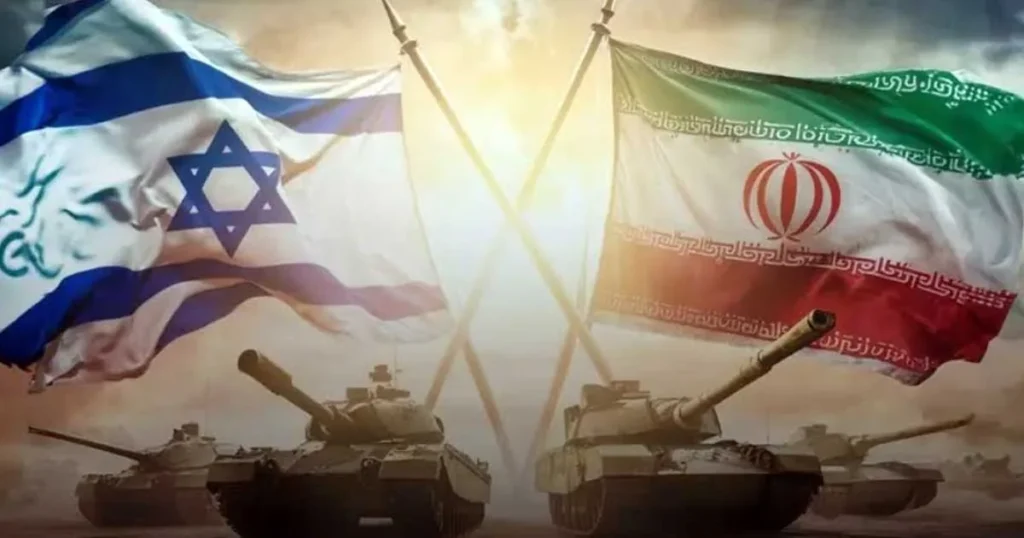
Israel Iran war 2025, Explore the full story of the 2025 Israel-Iran war—airstrikes, death toll, ceasefire updates, and future risks. Detailed timeline and current military status.
Introduction
The year 2025 marked one of the most dangerous escalations in Middle Eastern geopolitics — the outbreak of war between Israel and Iran. Triggered by a series of covert operations, nuclear site sabotage, and ballistic missile exchanges, the 12-day conflict came to be known as one of the deadliest and most destabilizing confrontations in recent decades.

This blog provides a comprehensive analysis of the Israel-Iran War 2025, including military strategies, the humanitarian toll, regional responses, ceasefire implementation, and the ongoing political implications.
1. Background of Israel-Iran Tensions
Tensions between Israel and Iran date back decades, grounded in Iran’s support for anti-Israel groups (like Hezbollah), its nuclear program, and mutual cyber and covert sabotage missions. Israel views a nuclear-armed Iran as an existential threat, while Iran considers Israel a Western-backed aggressor undermining regional sovereignty.
2. Spark of the Conflict: Operation Rising Lion
On June 13, 2025, Israel launched Operation Rising Lion, a coordinated strike involving the Mossad and Israeli Air Force. The mission targeted Iran’s top nuclear scientists and IRGC generals. Over 30 high-value Iranian officials were killed in the opening attack.
This led to Iran initiating Operation True Promise III, launching over 1,000 drones and hundreds of missiles toward Israeli cities, military bases, and strategic infrastructure.
3. Timeline of the Israel-Iran War 2025
June 13, 2025
- Israeli jets strike multiple targets near Natanz and Fordow nuclear sites.
- Drone attacks attributed to Mossad sabotage Iran’s S-300 air defense batteries.
June 14–16
- Iran fires over 400 ballistic missiles at Israeli cities. Most are intercepted by Iron Dome and David’s Sling.
- Soroka Medical Center in Beersheba suffers a direct hit, injuring dozens.
June 17–19
- IDF launches retaliatory strikes near Tehran and Esfahan.
- Mass evacuations from Iranian cities begin. Over 100,000 flee Tehran.
June 20–22
- The U.S. provides intelligence and launches limited strikes on Iranian nuclear infrastructure.
- Qatar-based U.S. bases face missile fire from Iran, resulting in increased military alert levels.
June 23
- Ceasefire negotiations begin via Swiss intermediaries.
June 24
- Ceasefire agreement signed under U.S. and UN supervision.
4. Military Tactics: Mossad Sabotage & Drone Warfare

Israel’s Mossad played a crucial role in the pre-emptive phase. Intelligence reports suggest:
- Remote detonation of explosives at Iranian nuclear fuel processing sites.
- Use of stealth drones for real-time surveillance and assassination.
- Cyberattacks that disabled Iranian missile guidance systems.
Meanwhile, Iran used: Israel-Iran War
- Shahed-series kamikaze drones.
- Emad and Qiam-class ballistic missiles with improved range and accuracy.
- Proxy militias (e.g., Hezbollah) to open secondary fronts.
5. Iranian Missile Strikes: Civilian & Strategic Targets
Iran’s counterstrikes were massive: Israel-Iran War
- Tel Aviv: 5 missiles struck industrial zones.
- Haifa: Port facilities damaged.
- Negev Desert: Alleged nuclear storage site hit.
Israel reported 29 fatalities, while Iran suffered over 600, most in the military and nuclear sectors.
6. Death Toll and Casualty Analysis (Israel-Iran War)
| Country | Deaths | Injuries |
|---|---|---|
| Iran | 610–627 | 4,700+ |
| Israel | 28–29 | 3,200+ |
Civilian infrastructure, including hospitals, homes, and power stations, faced extensive damage, especially in Iran.
7. Ceasefire Agreement: U.S. Intervention and Diplomacy

Former President Donald Trump brokered a ceasefire. Key terms included:
- Mutual cessation of missile and drone strikes.
- Gradual de-escalation of troop movements.
- Resumption of nuclear deal talks mediated by Europe.
The ceasefire took effect at 04:00 GMT on June 24, though scattered strikes occurred for 24 more hours.
8. Aftermath: Humanitarian Crisis and Political Fallout
In Iran:
- Food and fuel shortages in urban centers.
- Over 150,000 internally displaced people.
- Crackdowns on anti-government protests.
In Israel:
- Heightened military reserves.
- Reinforcement of northern and southern border areas.
9. The Role of the U.S. and Global Superpowers

The United States played a dual role — supplying military aid to Israel and negotiating ceasefire terms. China and Russia condemned Israeli actions but avoided military involvement. The EU advocated for nuclear diplomacy.
10. Impact on Regional Stability and Gulf States
The war deeply affected neighboring Arab states:
- Saudi Arabia and UAE quietly supported Israel via airspace access.
- Jordan mediated between warring parties.
- Lebanon’s Hezbollah fired rockets into Israel, briefly escalating border tensions.
11. Iran’s Nuclear Ambitions: What’s Next?
Despite attacks, Iran’s nuclear program remains active. Recent reports indicate uranium enrichment resumed in underground facilities. Talks with the IAEA have stalled again.
Israel vows to prevent any nuclear capability, while Iran insists on peaceful development.
12. Future War Risks and International Preparedness

The ceasefire may be temporary. Potential flashpoints include: Israel-Iran War
- Proxy wars in Lebanon, Syria, and Iraq.
- Cyberattacks on nuclear facilities.
- U.S. and Israeli preemptive strikes if uranium enrichment crosses 90% threshold.
The world must prepare for continued instability unless a lasting peace framework is established.
13. FAQs: Israel-Iran Conflict 2025
Q1: What caused the 2025 Israel-Iran war? A: It began with Israel’s Operation Rising Lion, targeting Iranian nuclear scientists and generals, prompting missile retaliation.
Q2: How many people died in the war? A: Iran lost over 610 people, and Israel 29, with thousands injured on both sides.
Q3: Is the war over now? A: A ceasefire was brokered on June 24, 2025, and has largely held since.
Q4: What role did the U.S. play? A: The U.S. supported Israel militarily and mediated the ceasefire.
Q5: Are nuclear talks ongoing? A: They resumed briefly but are again on hold due to IAEA access issues.
14. Conclusion
The Israel-Iran War of 2025 marks a significant moment in modern history — a demonstration of how advanced military technologies, regional alliances, and diplomatic fragility can lead to near-apocalyptic confrontation. While the guns have fallen silent for now, the undercurrents of mistrust and strategic ambition remain strong.
The world watches closely, hoping the scars of 2025 steer both nations — and the region — toward a more stable and secure future. Israel-Iran War






